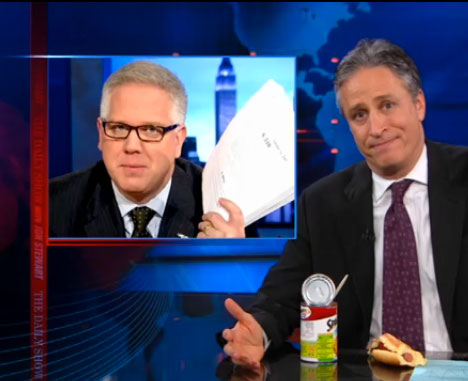On Thursday afternoon, the House approved the “Healthy, Hunger-free Kids Act,” also known as the child nutrition reauthorization (CNR) bill. Having already cleared the Senate, the bill is ready for approval by President Obama, who has long supported it (along with Michelle Obama, who’s made kids’ health her policy focus). This broad piece of legislation, which Congress has to reauthorize every five years, controls funding for all child nutrition and women, infant, and children (WIC) programs, including school lunches.
The reauthorization had been dogged by delays. The Senate passed it by unanimous consent in August. In the House, the bill bogged down recently because some Democrats recoiled from funding the school lunch funding increase with money taken from the Supplemental Nutrition Assistance Program (SNAP): in effect, adding money to low-income children’s lunches by taking it from their home meal budgets. But then the White House promised to find a way to replace the money taken from SNAP, and the way was cleared for the successful vote.
Approximately 31 million children participate in the subsidized school meal program, with the federal government giving schools $2.72 for a fully subsidized lunch. According to the School Nutrition Association, the average school loses 35 cents on every lunch it serves.
Unfortunately, while the bill’s long-delayed passage is being lauded by sustainable-food advocates, it provides just 6 cents in extra funding. Worse, it calls for new school-food standards that seem destined to jack up costs in the nation’s cash-strapped cafeterias while consigning tons more cooked-to-death broccoli, canned green beans, and other vegetables to the trash heap. Meanwhile, the puny 6-cent boost in federal payments for school lunches is conditioned on schools adopting those very same standards.
 The extra money for school lunches won’t buy better nutrition.That’s right: The money widely hailed as the first real (inflation-adjusted) increase in school meal funding in recent memory is only available to schools that demonstrate they are meeting standards that will probably force them to shell out more money for food that won’t be eaten.
The extra money for school lunches won’t buy better nutrition.That’s right: The money widely hailed as the first real (inflation-adjusted) increase in school meal funding in recent memory is only available to schools that demonstrate they are meeting standards that will probably force them to shell out more money for food that won’t be eaten.
Sure enough, the Institute of Medicine, in issuing its recommended standards in October 2009 at the USDA’s behest, called for precisely the kinds of things kids like to eat least: bigger servings of whole grains and vegetables. The standards would even make it more difficult for schools to substitute fruits or fruit juices for vegetables, on the theory that kids really need more greens and orange-colored vegetables in their diet.
The IOM panel that made the recommendations said the requirements would certainly raise the price of ingredients for school meals, with no guarantee kids would actually eat the food. Kids have a long history of either refusing vegetables in the food line, or just dumping them uneaten. School kitchens have an equally long history of serving vegetables that are anything but palatable.
So much for Congress coming to the rescue of school food.
On the plus side, the IOM standards would lower the number of calories schools must offer kids in subsidized meals, which could mean fewer sugary options in the cafeteria. Up to now, schools have been using sugar to jack up the calories in their meals in order to comply with outdated USDA requirements.
The IOM panel said it hoped the new standards would help squeeze sugar off school menus. But it tried to leave plenty of room for sugar-laden chocolate milk. They wouldn’t want to cross the dairy industry, after all.
With all the hullabaloo over the $4.5 billion cost of the legislation, and whether it would have to be paid for with some $2 billion in funds previously designated for food stamp benefits (it will), the best part of the bill was nearly lost from the discussion. That’s a provision calling on the USDA to develop within two years yet another set of standards, these for foods sold in schools but outside the federally subsidized meal line, meaning through vending machines, school commissaries, and cafeteria a la carte lines that dish out junk like they’re corner convenience stores.
For years, healthier food advocates have been trying to get candy, chips, sodas, and other junk food out of schools, to no avail. The USDA now has authority to banish any foods (with the exception of those sold at fundraisers) that do not comport with the Dietary Guidelines for Americans, which means limits on fat, sugar, and salt.
Does that mean vending machines with baby carrots, not Doritos and Sprite, in every public school? Not necessarily. The fight now shifts to the inner sanctum of the USDA secretary’s office, where it is yet to be seen what kind of influence the powerful food industry lobby will wield.
Another large chunk of change in the bill — $375 million — is designated to fund grants at the state level for nutrition education and anti-obesity efforts. There’s $40 million to study the causes of hunger, obesity, and Type 2 diabetes in children, and a token amount — $5 million — allotted for grants to promote farm to school programs, especially in schools with large numbers of low-income students.
Congress also calls on the USDA to study ways of using Medicaid and census data to allow large blocks of children to become eligible for free school meals without filling out cumbersome applications, meaning easier access to food. The bill also orders cafeterias to make water freely available.




